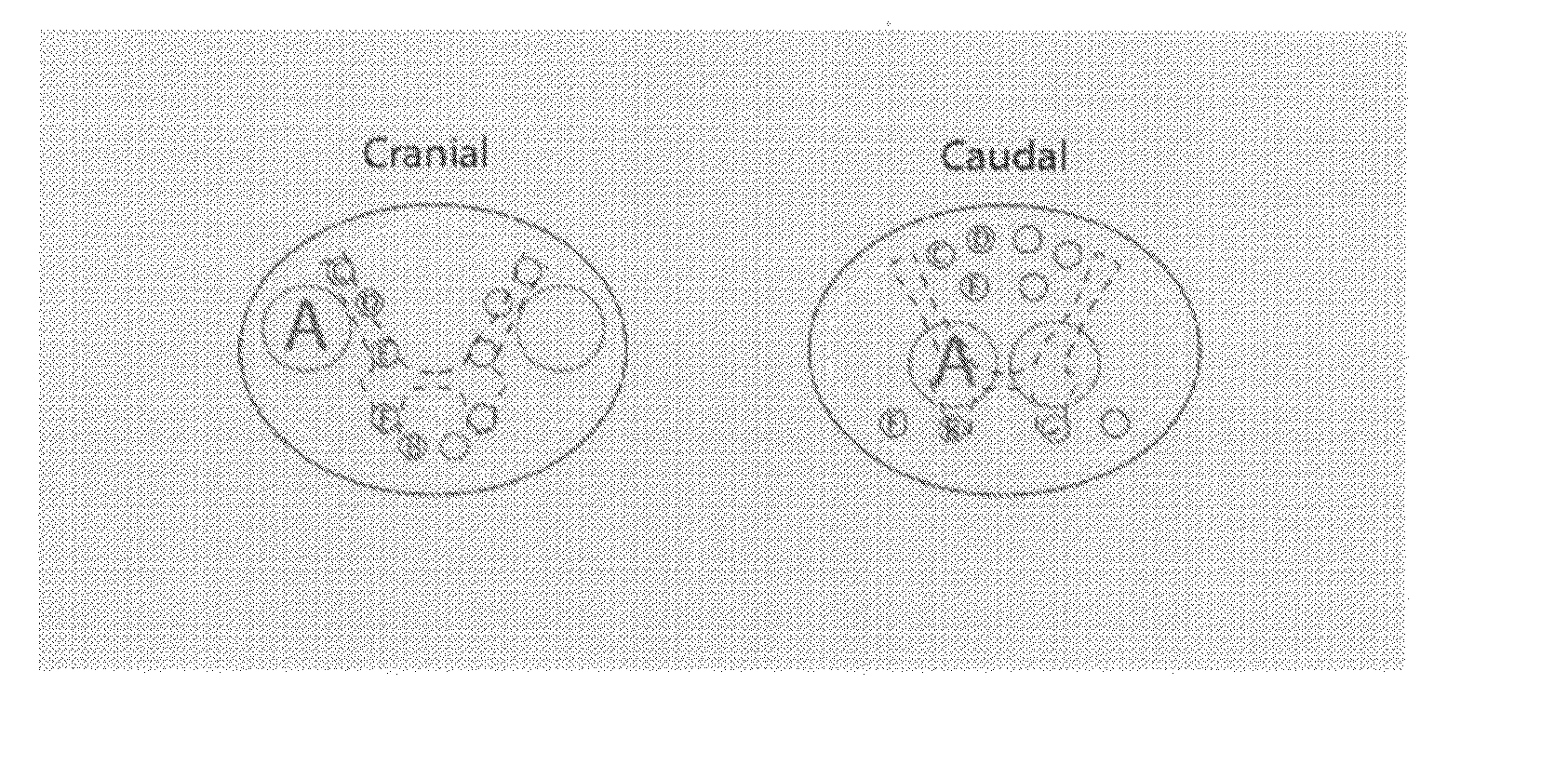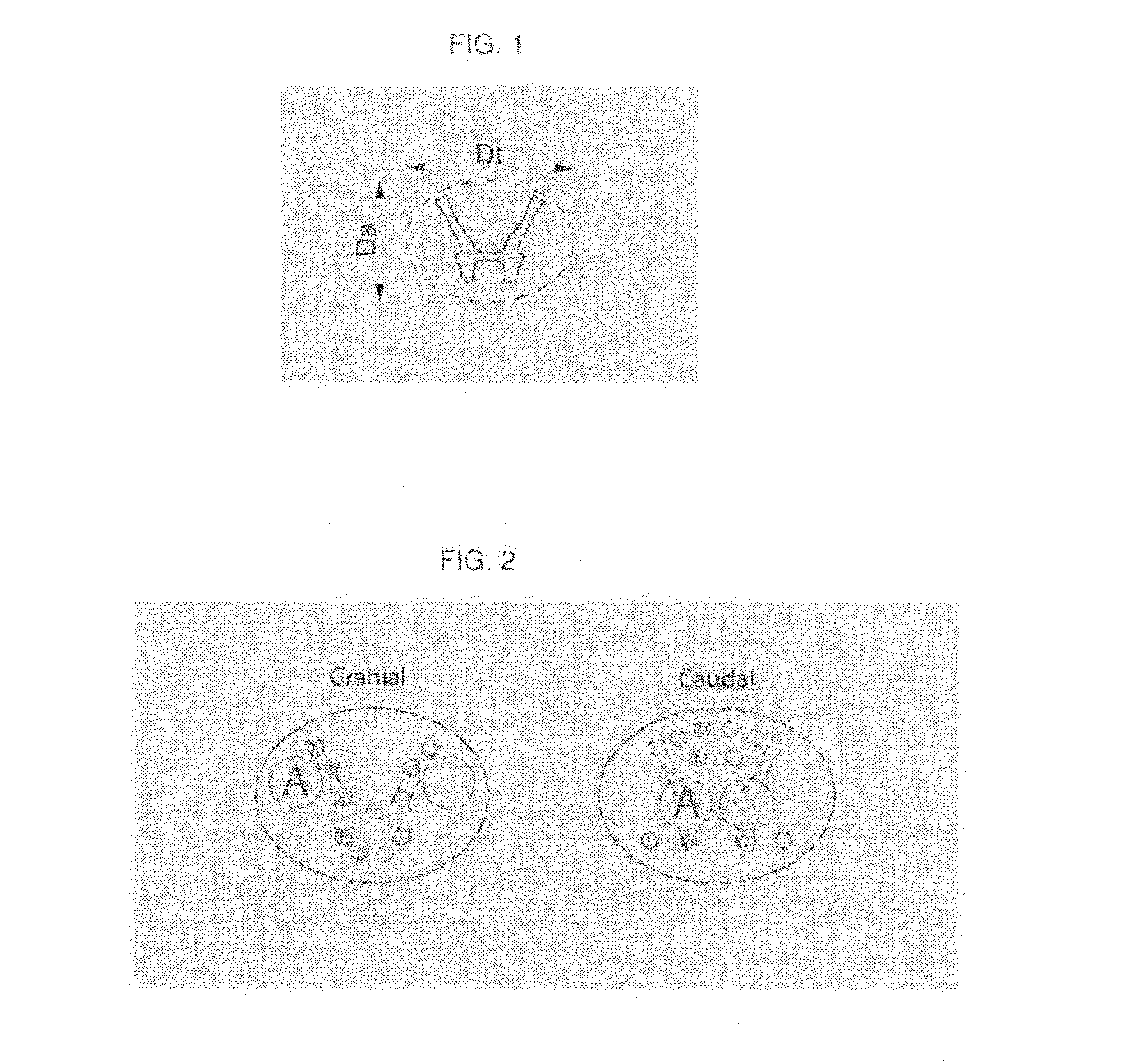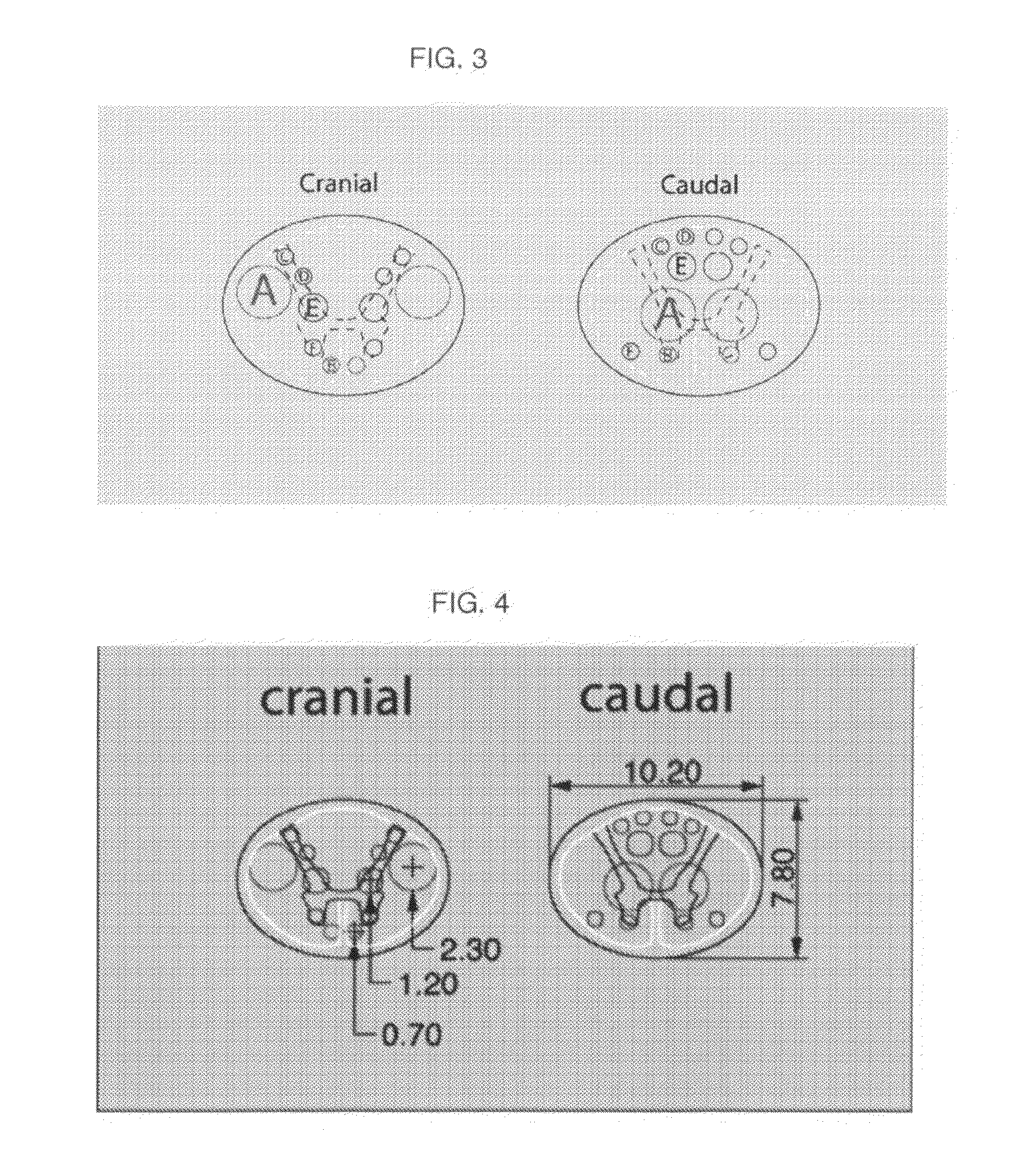Spinal Cord Devices and Methods for Promoting Axonal Regeneration
a technology of axonal regeneration and spinal cord, which is applied in the field of spinal cord injury treatment, can solve the problems of no therapy which restores or even significantly improves the function of the spinal cord, incontinence, and partial or complete paralysis, and achieve the effects of promoting axonal regeneration, promoting axonal regeneration, and promoting axonal regeneration
- Summary
- Abstract
- Description
- Claims
- Application Information
AI Technical Summary
Benefits of technology
Problems solved by technology
Method used
Image
Examples
example 1
[0050]This example evaluates a biodegradable calcium sulphate device with heparin-activated rhFGF1 for treatment of spinal cord injury in rat.
[0051]SCI devices fabricated from α-calcium sulfate hemihydrate with 12 channels with similar geometry as shown in FIG. 5 were loaded with heparin-activated rhFGF1. The test animals, Sprague Dawley rats, were allocated into 5 study groups. Laminectomy was carried out on all animals independent of study group. The spinal cord of the control groups were either transected (group 1, negative control) or left intact (group 2, positive control). The spinal cords of the rats of groups 3-5 were transected and the removed spinal cord tissue was replaced by devices containing nerve grafts. The SCI-devices employed for study group 4 were soaked in 500 μg / ml heparin-activated rhFGF1 (rhFGF1:heparin, 1:1, w / w). For study group 5 the SCI-devices were soaked in 50 μg / ml heparin-activated rhFGF1. Due to autophagy, a few animals had to be sacrificed prior to t...
example 2
[0053]This example evaluates dose-finding of heparin-activated rhFGF1 administered in a biodegradable calcium sulphate device for treatment of spinal cord injury in rat.
[0054]The same type of devices as in Example 1 were used. Each device was soaked in heparin-activated rhFGF1 (FGF1:heparin, 1:100 molar ratio) solution for 1 h at room temperature. Heparin solution without preservatives (10000 IE / ml H2O, Leo Pharma Denmark) was employed. The devices were soaked in 50 μg / ml, 0.5 μg / ml, 0.005 μg / ml and 0 μg / ml concentrations of heparin-activated rhFGF1 corresponding to a dose of 45, 0.9, 0.01 and 0 ng / mg device (based on solution uptake and adsorption).
[0055]FGF1-dependent recovery of bilateral MEPs in the hindlimbs of treated animals is illustrated in FIG. 6. All animals showed undetectable MEPs in the hindlimbs 1 week post-surgery, while already after 2 weeks positive MEPs were recorded. The results indicate that an effective dose of heparin-activated rhFGF1 in the disclosed device i...
example 3
Implantation of Heparin-Activated rhFGF1 Loaded SCI-Devices with Peripheral Nerve Grafts in Pig—Development of Operation Technique and Limited Safety Study
[0056]Clinical SCI-devices as illustrated in FIG. 5, 15 mm high and having an oval cross section of 9.0-6.9 mm, comprising 12 channels for nerve graft positioning are made from α-calcium sulphate hemihydrate with subsequent sterilization.
[0057]Each device is placed in 30 ml of a soaking solution consisting of 5 μg / ml rhFGF1, 80 μg / ml Gentamicin, 10 mM NaPO4, 150 mM NaCl, 0.3 mM EDTA at pH 7 for 1 hour to allow the solution to be adsorbed into the device. The heparin concentration is 430 μg / ml and the ratio rhFGF1:heparin 1:100 (molar).
[0058]The animals are female Landrace pig. After 10 days of acclimatization, the pig is anaesthetized with a combination of fentanyl, midazolam and propofol and prepared for surgery. During the surgical procedure, the intravenous anaesthesia is maintained with fentanyl 0.004 mg / kg / h, midazolam 0.5 mg...
PUM
| Property | Measurement | Unit |
|---|---|---|
| anteroposterior diameter/transverse diameter | aaaaa | aaaaa |
| diameter | aaaaa | aaaaa |
| diameter | aaaaa | aaaaa |
Abstract
Description
Claims
Application Information
 Login to View More
Login to View More - R&D
- Intellectual Property
- Life Sciences
- Materials
- Tech Scout
- Unparalleled Data Quality
- Higher Quality Content
- 60% Fewer Hallucinations
Browse by: Latest US Patents, China's latest patents, Technical Efficacy Thesaurus, Application Domain, Technology Topic, Popular Technical Reports.
© 2025 PatSnap. All rights reserved.Legal|Privacy policy|Modern Slavery Act Transparency Statement|Sitemap|About US| Contact US: help@patsnap.com



